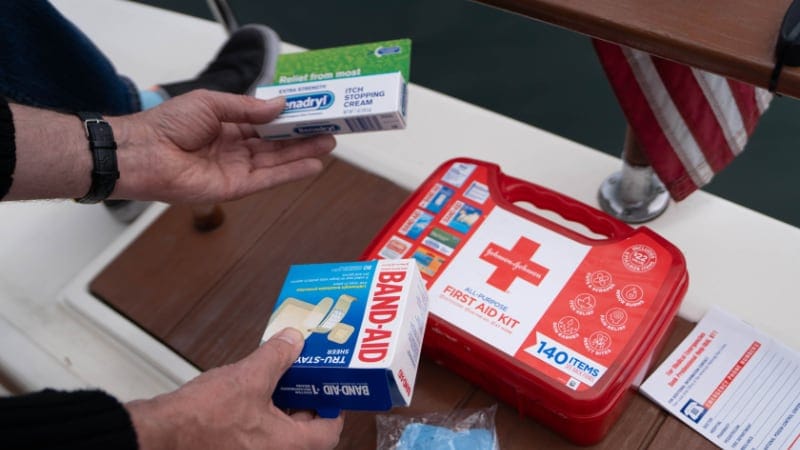Safety at Sea
with Kim Walther | St. Augustine Sailing
Learn how to avoid and overcome various safety scenarios encountered at sea
The most important part of your sailing education is knowing what to do when things go wrong to protect yourself, your crew, and your vessel. This online class is designed to not only teach some possible actions when events go wrong at sea, but also to encourage critical thinking skills and creative solutions to possible unexpected, catastrophic events.



Who is this online class for?
What will I learn?
IMPORTANT REASONS TO BE PREPARED FOR AN EMERGENCY AT SEA
List of Topics:
- BOW TO STERN ABOVEDECK ASSESSMENTS
Path to the Bow. Obstructions Abovedeck. Spare Halyard. Jib. Anchor Locker. Mast. Midship Rigging & Lines. Hatches. Cockpit Lines. Electronics. Gauges. Emergency Tiller. Emergency Bilge Pump. Lockers. - BELOWDECK ASSESSMENTS
Transducer. Bilge(s) & Pump. Thru-hulls. Schematics. Windlass Circuit Breaker. Engine. Tank Indicators. Electrical Panel. Code of Federal Regulations Items. - SYSTEMS FAILURES
Anchored Wind and Tide Opposed. Steering Fails. High Water Alarm. Can’t Flush Toilet. - INJURY SITUATIONS
Broken Bone. Deep Cut. Seasick. Man Overboard. - ENGINE SITUATIONS
Runaway Diesel. Smoke-Filled Cabin. Waiting on a Bridge. Fouled Prop. - NOT UNDER COMMAND / RESTRICTED ABILITY TO MANEUVER
Run Aground. Fire. Engine Quits - Must Anchor or Must Sail. - SAILING SITUATIONS
Lose a Jib Sheet. Roller Furling Jib will not Furl. Shroud has Parted. Rough Seas and Harness(es). - HOW TO PRACTICE ON YOUR BOAT
Knots. Raising Sail. Anchoring. Reefing. Instruments. Emergency Tiller. Fire Extinguisher. Flares.
Your Instructor
KIM WALTHER
Kim Walther, an instructor at St. Augustine Sailing, boasts a 100-ton near coastal (offshore) USCG captain’s license with sailing and towing addendums. With 33 years of teaching experience (having taught over 3,000 students), she attributes her mastery to diverse experiences and continual skill refinement. Recognized as an ASA instructor of 101, 103, 104, 105, 114, 116, and 118 and honored ASA Instructor of the Year, Kim has refined her expertise through an impressive accumulation of over 10,000 practice hours. Her passion for sailing extends to classes, charters, deliveries, and races (both inland and offshore). Kim has experience operating various vessels, including, currently, 21'6" Hunter sloops as well as Jeanneau 349 sloops, Jeanneau 41’ and 44’ sloops, a Lagoon 44 catamaran, and even a 49-passenger pontoon boat with twin 200 hp engines.

